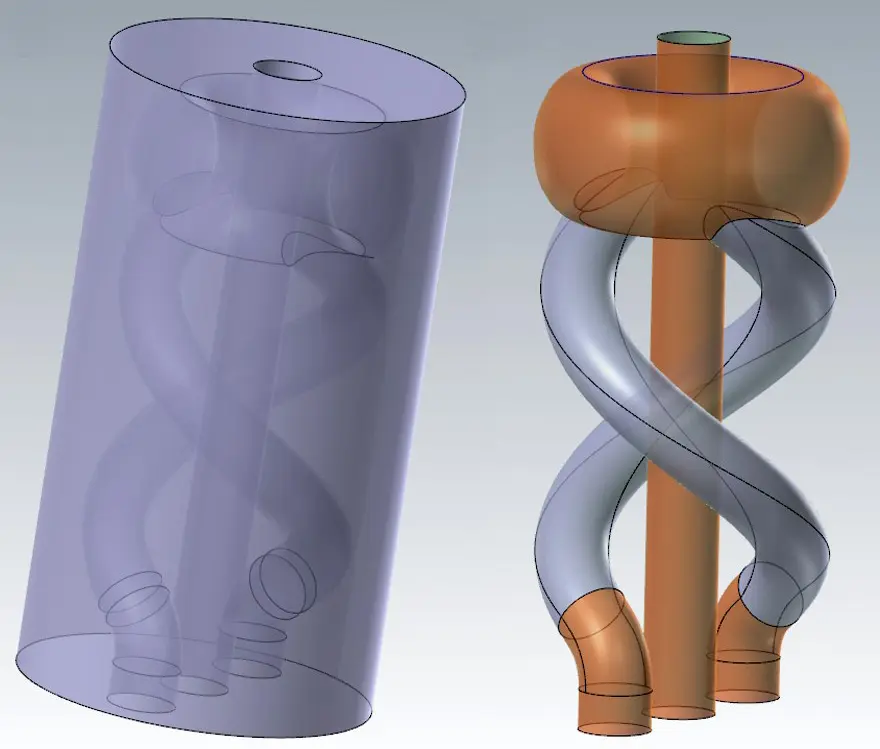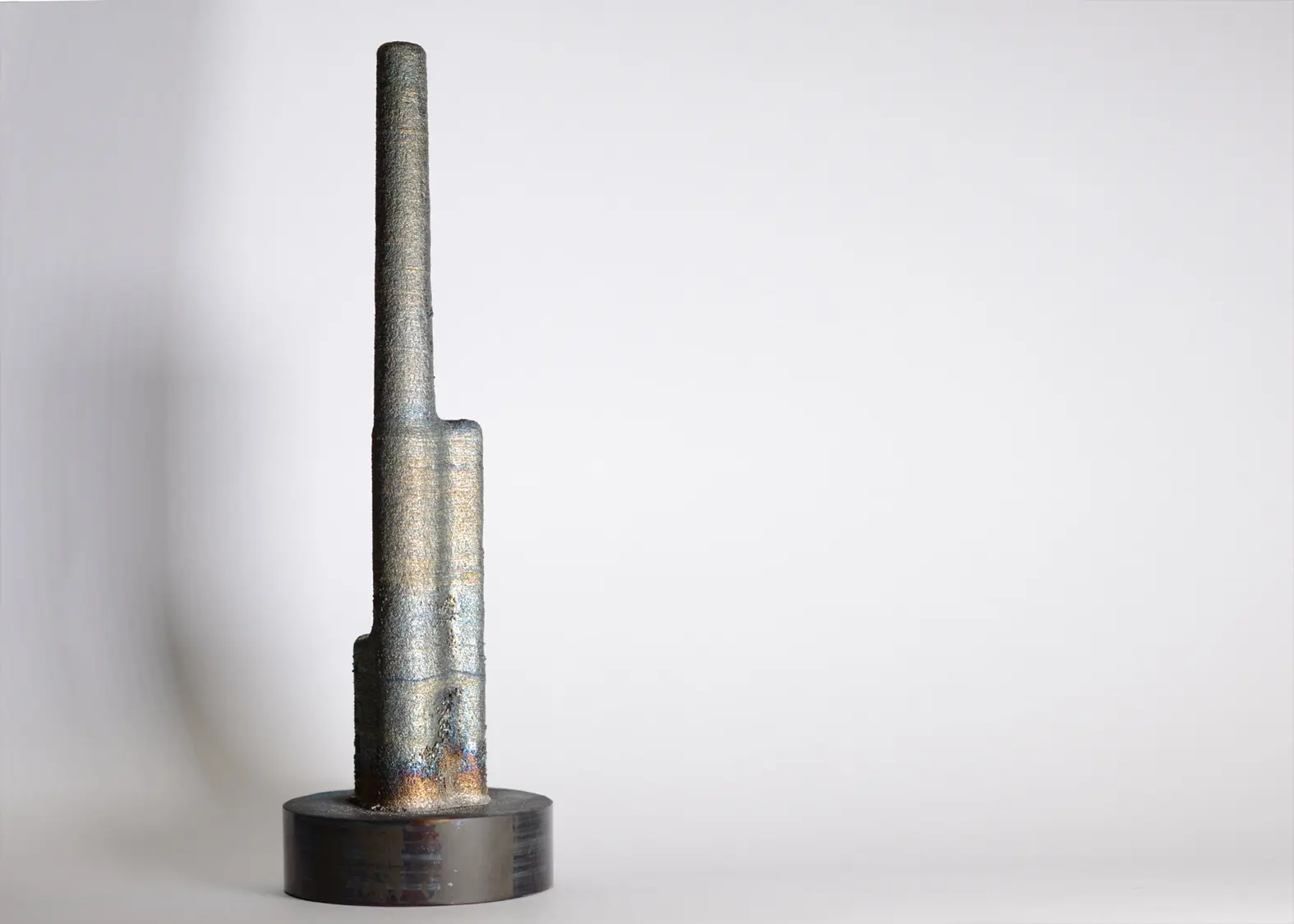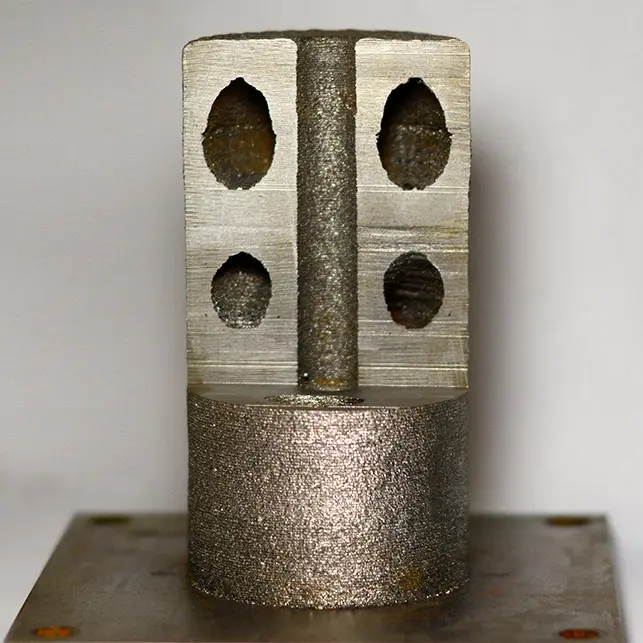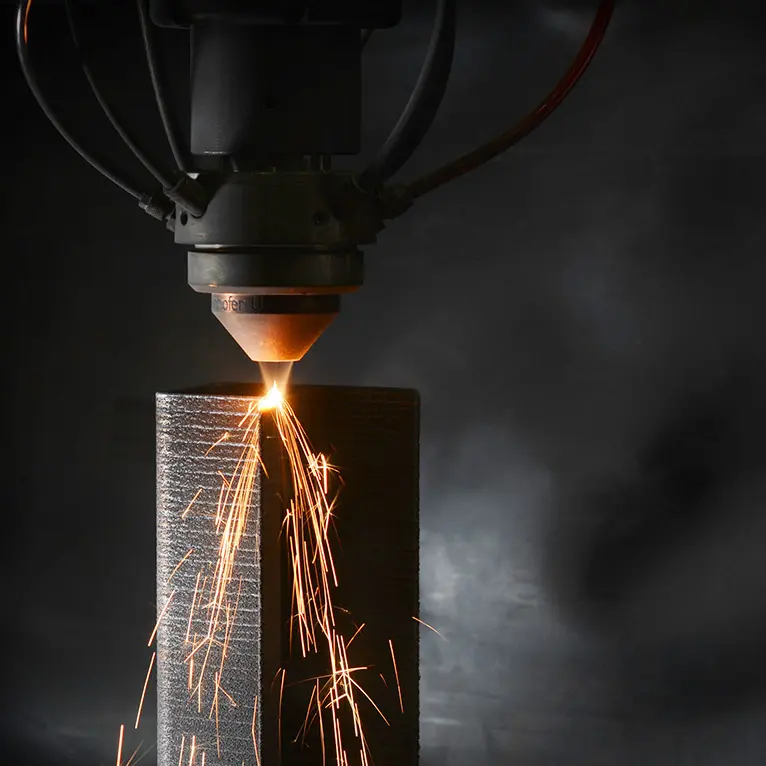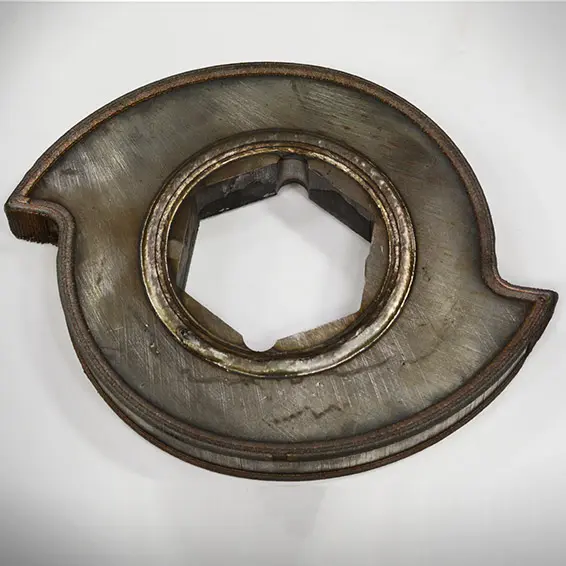Additive manufacturing is a revolutionary approach to creating complex parts.
Compared to traditional subtractive machining methods, additive manufacturing has the potential to lower lead times while greatly reducing waste products. Furthermore, greater part flexibility is possible in terms of geometry and multi-material components.
There are various techniques of additive manufacturing available commercially which cater to different applications. At Lincoln Laser Solutions, we specialize in Direct Energy Deposition. A finely tuned laser creates a melt pool on a substrate while alloy powder is injected coaxially. Closed-loop melt pool monitoring maintain optimum parameters for the desired mechanical properties. The results are near-net shape parts that require little or no post-machining.

